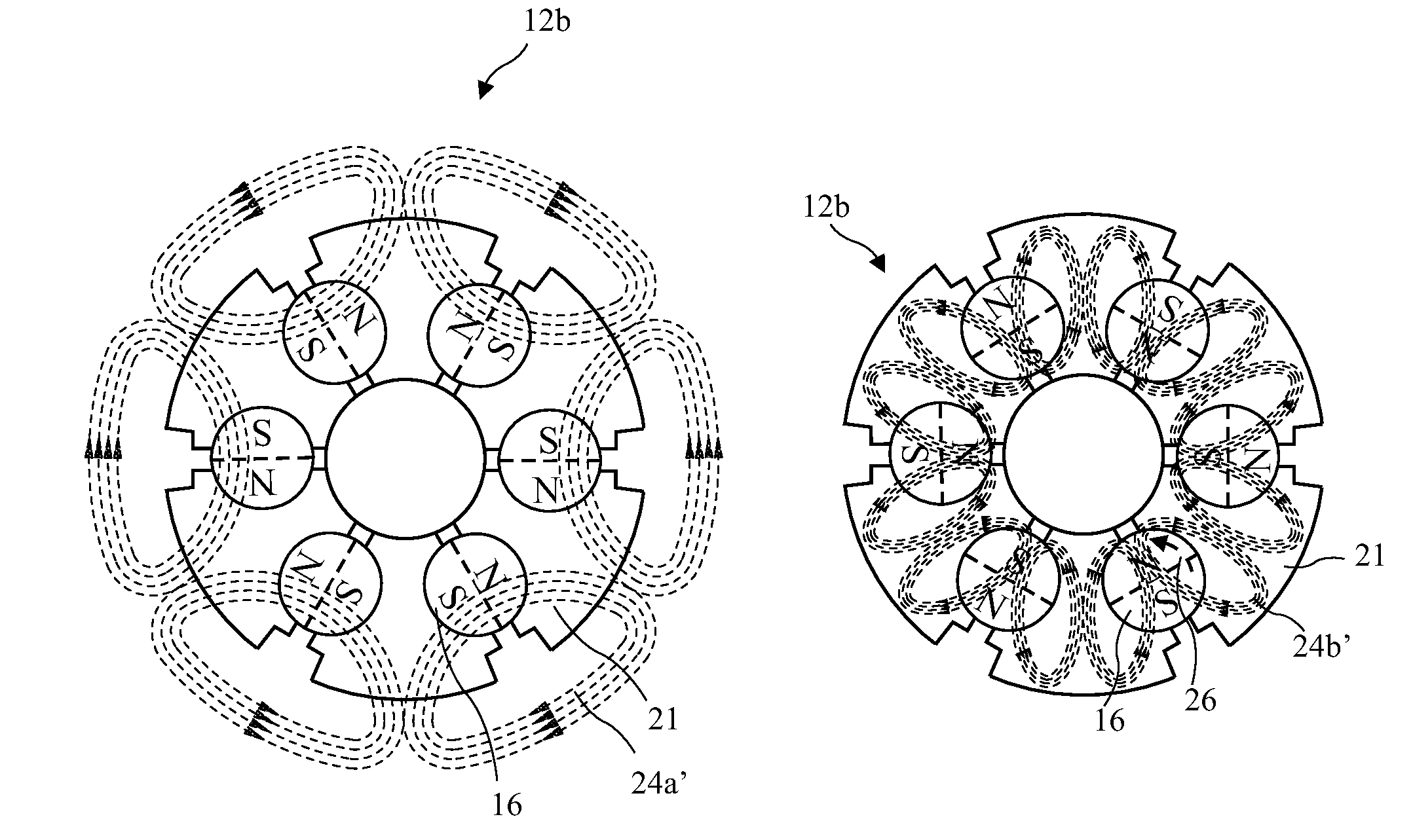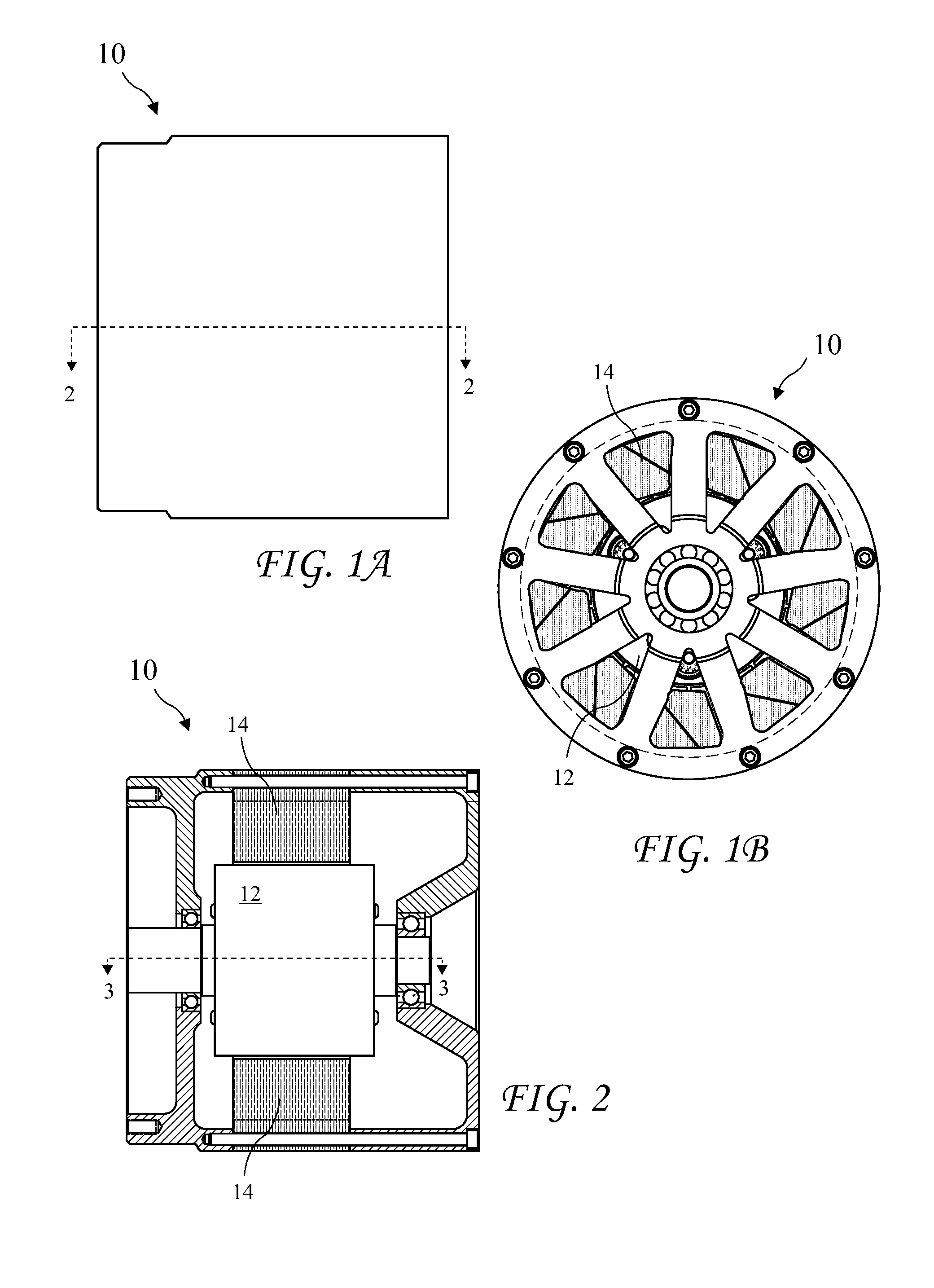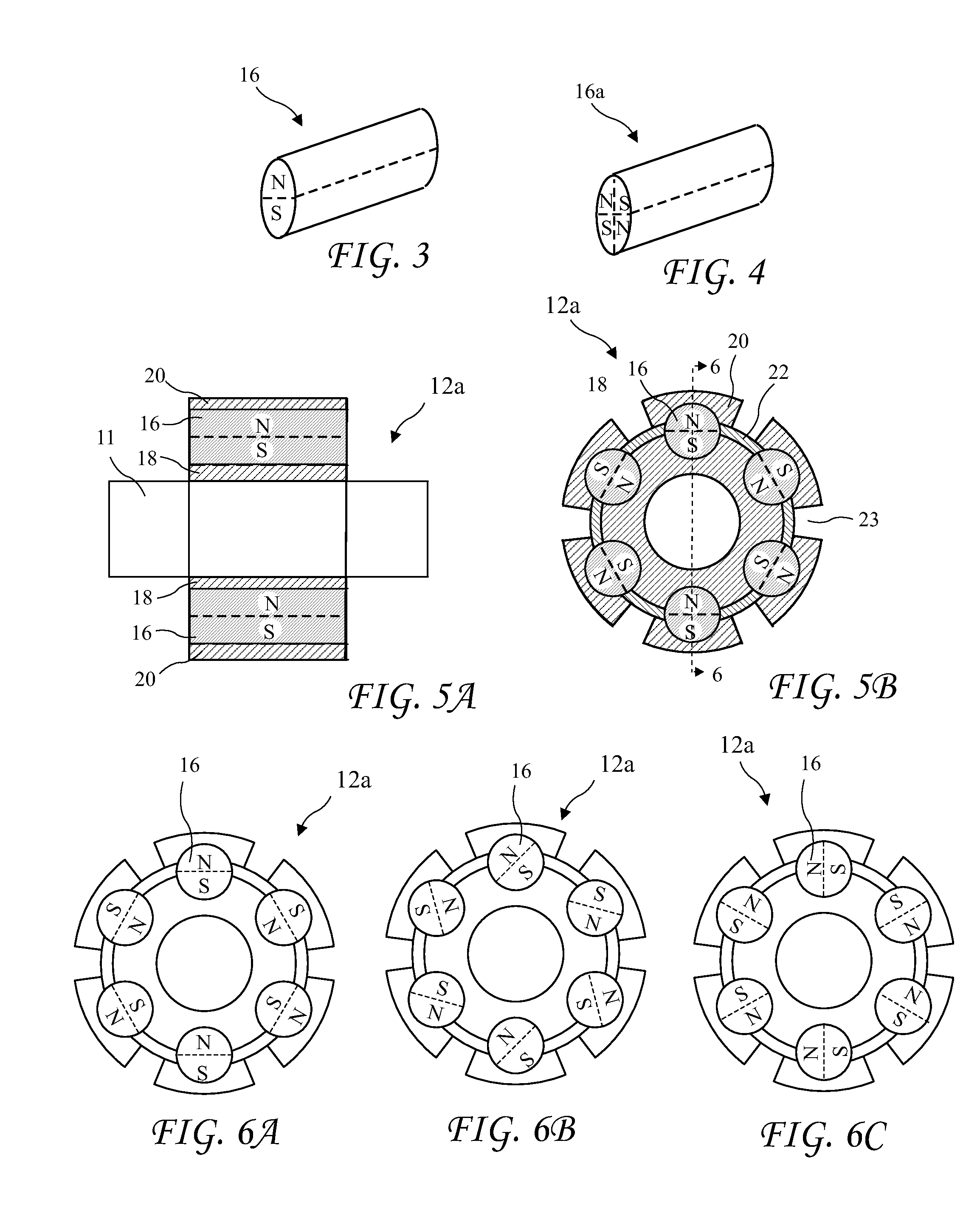Windmill generator with mechanically tuneable permanent magnetic field
a permanent magnetic field, windmill generator technology, applied in the direction of electric generator control, magnetic circuit shape/form/construction, magnetic circuit rotating parts, etc., can solve the problem that many known alternator applications cannot control the rpm of the alternator, and achieve the effect of improving the starting torque and high rpm efficiency
- Summary
- Abstract
- Description
- Claims
- Application Information
AI Technical Summary
Benefits of technology
Problems solved by technology
Method used
Image
Examples
first embodiment
[0085]A side view of apparatus 40a for adjusting the cylindrical two pole permanent magnets 16 in a first magnet position is shown in FIG. 19A, an end view of the apparatus 40a for adjusting the cylindrical two pole permanent magnets in the first magnet position is shown in FIG. 19B, a side view of the apparatus 40a for adjusting the cylindrical two pole permanent magnets 16 in a second magnet position is shown in FIG. 20A, and an end view of the apparatus 40a for adjusting the cylindrical two pole permanent magnets in the second magnet position is shown in FIG. 20B. The apparatus for adjusting 40a includes a linear motor 42 which is preferably a stepper motor, a shaft 48 actuated axially by the linear motor 42, and ring 46 axially actuated by the shaft 48, and an arm (or arms) 44 actuated by the ring 46 and connected to one of six toothed racks 52. The toothed racks 52 engaged gears 50 attached to the magnets 16 to rotate the magnets 16. Actuation of the shaft 48 to the right pulls...
second embodiment
[0086]A side view of apparatus 40b for adjusting the cylindrical two pole permanent magnets16 in a first magnet position is shown in FIG. 21A, an end view of the apparatus 40b for adjusting the cylindrical two pole permanent magnets in the first magnet position is shown in FIG. 21B, a side view of the apparatus 40b for adjusting the cylindrical two pole permanent magnets 16 in a second magnet position is shown in FIG. 22A, and an end view of the apparatus 40b for adjusting the cylindrical two pole permanent magnets in the second magnet position is shown in FIG. 22B. The apparatus for adjusting 40b includes the linear motor 42 which is preferably a stepper motor, a shaft 48 actuated axially by the linear motor 42, and ring 46 axially actuated by the shaft 48, and a bent elbow 45 actuated by the ring 46 and connected to one of six toothed racks 52. The bent elbow 45 is biased to a bent position, for example, with a 90 degree bend. When the ring 46 moves to the right to release the ben...
third embodiment
[0087]A side view of apparatus 40c for adjusting the cylindrical two pole permanent magnets 16 in a first magnet position is shown in FIG. 23A, an end view of the apparatus 40c for adjusting the cylindrical two pole permanent magnets in the first magnet position is shown in FIG. 23B, a side view of the apparatus 40c for adjusting the cylindrical two pole permanent magnets 16 in a second magnet position is shown in FIG. 24A, and an end view of the apparatus 40c for adjusting the cylindrical two pole permanent magnets in the second magnet position is shown in FIG. 24B. The apparatus for adjusting 40c includes the linear motor 42 which is preferably a stepper motor, a shaft 48 actuated axially by the linear motor 42, a first piston 47 connected to the shaft 48 and a second piston 49 in fluid communication with the piston 47 and connected to one of the six toothed racks 52. When the piston 47 moves to the right the second piston 49 is drawn radially in and the toothed rack 52 is pulled ...
PUM
 Login to View More
Login to View More Abstract
Description
Claims
Application Information
 Login to View More
Login to View More - R&D
- Intellectual Property
- Life Sciences
- Materials
- Tech Scout
- Unparalleled Data Quality
- Higher Quality Content
- 60% Fewer Hallucinations
Browse by: Latest US Patents, China's latest patents, Technical Efficacy Thesaurus, Application Domain, Technology Topic, Popular Technical Reports.
© 2025 PatSnap. All rights reserved.Legal|Privacy policy|Modern Slavery Act Transparency Statement|Sitemap|About US| Contact US: help@patsnap.com



